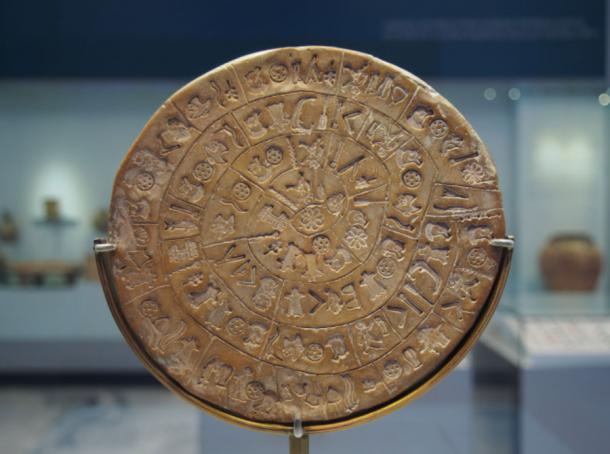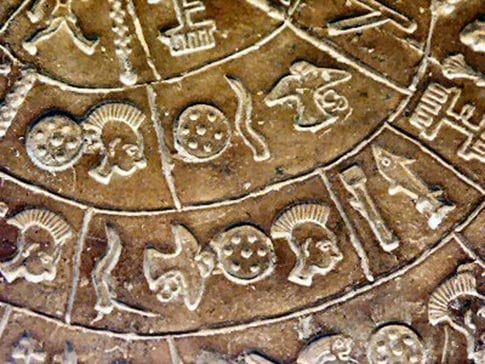
In 1908 an Italian archaeologist ventured into the ruins of Phaistos, an ancient Minoan palace on the south coast of Crete. In an underground temple depository, among burnt bones, dust, and ashes, he found a remarkably intact golden-hued disc. The discovery is known as one of the most famous mysteries in archaeology: The Phaistos Disc.
The Phaistos (or Phaestos) Disc is a large, umber-coloured, fired clay plate, about 15 cm in diameter and 1 cm thick. Both sides of the disc are covered with a spiral of strange stamped symbols, circling clockwise towards the disc’s centre. It’s presumed the 45 unique symbols were made by pressing hieroglyphic seals into the damp, soft clay disc.

The Phaistos Disc, detail (Wikimedia Commons)
Section: